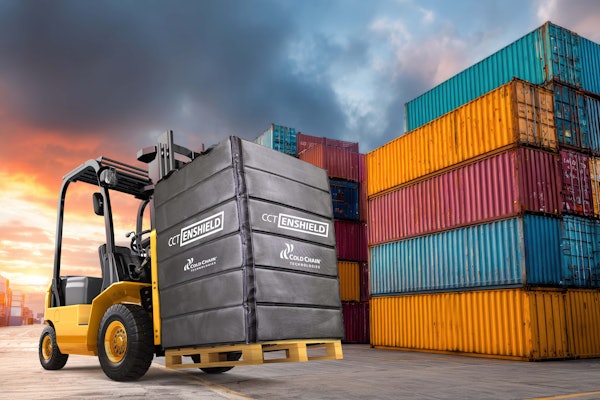
From pharmaceuticals to farms, laboratory automation is used to reduce costs, improve accuracy, and increase output. With 2012 revenues of $1 billion in North America and upward growth projections for the next five to 10 years, the once novel idea of laboratory automation is a growing trend.
Pharmaceuticals, clinical diagnostics, and academia have historically been the primary drivers of growth in this market. However, future growth will come from the expansion of laboratory automation into new market segments, including forensics and agriculture.
According to BCC Research, a publisher of market research reports and technical publications. the market as a whole is expected to increase by $1 billion in the next five years. The Asian market alone is expected to double its 2010 expenditures on laboratory automation by 2017.
BCC Research notes the pharmaceutical and biotechnology industries have already proven the benefits of laboratory automation, which allows these industries to ensure consistent quality, reduce operating expenses, and increase the speed to market of their new products.
Both industries are expected to continue the trend towards total laboratory automation over the next several years as a growing demand for diagnostics and pharmaceuticals drives the need for increased throughput.
The clinical diagnostics industry has also been an early adopter of laboratory automation. This industry primarily performs diagnostic testing in support of medical facilities.
Market experts believe that budget pressures and staffing shortages will lead to a slightly suppressed, but still moderate growth in laboratory automation for this market.
Academia has historically been an innovator in the area of laboratory automation. This industry’s need for laboratory automation to support research initiatives often drives further automation. For example, the human genome project would have been impossible without some of the earliest attempts at laboratory automation used by academic researchers.
However, a decrease in funding for academic research is expected to keep the demand for further laboratory automation low for at least the next five years.
Forensics, on the other hand is expected to increase their use of laboratory automation. The increasing popularity of forensic DNA testing has increased demand for laboratory automation in order to accommodate the volume of DNA samples. Laboratory automation helps forensics increase throughput while decreasing the risk of cross-contamination. Laboratory automation also makes it easier to document testing procedures and results and allows forensic department to operate with fewer staff.
The only potential constraint anticipated in the growth of laboratory automation is the lack of adequate laboratory information management systems. Stable and reliable information systems will be needed to support a massive increase in the use of laboratory automation.
The full report on laboratory automation market statistics, entitled, “Laboratory Automation: Technologies and Global Markets,” provides information on who the key players will be in the next five years and how you can be poised to capitalize on this growing market.
Labware equipment growth expected
In its “General Laboratory Equipment: Global Markets,” report, BCC forecasts the global market for general labware is expected to reach $6.7 billion in 2017, up from $3.9 billion in 2012.
BCC notes that the labware market represents an extremely complex environment, with stakeholders ranging from electronics to glassware, and from huge multinationals to small regional outfits. This report breaks the market for general labware into four geographic segments--North America, Europe, Asia, and the rest of the world (ROW)--with North America claiming the lion’s share, expected to be worth nearly 2.2 billion in 2017, up from $1.4 billion in 2012. The European segment is the second-largest share, expected to be worth $1.7 billion in 2017, up from $1.0 billion in 2012.
BCC’s report notes that the fragmented labware market is ripe for mergers and acquisitions, citing a recent example as Corning picking up the majority of Becton Dickenson’s Discovery Labware business, worth $720 million in November 2012.
However, amid intense competition, general labware market movers face significant challenges as the scope of innovations is limited in this segment. BCC says the market is in great need of higher quality equipment and time-saving, autoprecision devices. This is leading to manufacturing outsourcing to developing economies. China, so far the second largest market in Asia for lab equipment, is one of the fastest moving markets in the world, growing about 20% per year.
Within this environnment, there are significant challenges faced by laboratory companies such as intense competition, pressure of cutting cost, lack of skilled labor and sudden breakouts of new diseases. However, laboratory companies are facing these challenges through mergers and acquisitions, joint ventures to expand product portfolios and competencies to meet the market’s needs, point of care testing, and focus on technology innovations to impact on cost aspects, time, resources, and accuracy levels.
BCC Research report identifies and analyzes opportunities and major factors driving and inhibiting growth in the global labware market and its geographic subsegments. The report identifies major stakeholders, product portfolios and recent developments, and presents a competitive landscape for market leaders to track and analyze recent developments, alliances, joint ventures, mergers and acquisitions, and patents held by top players in the industry.
This report is intended to benefit entrants and manufacturers from the glass and plastic labware industries, to distributors and service providers of lab equipment and devices, pharmaceutical and other life sciences companies as well as research institutes, associations, and academicians.
For more information, contact BCC Research LLC, 49 Walnut Park, Building 2, Wellesley, MA 02481, or call 866-285-7215.





















